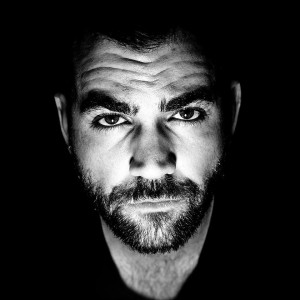Jung Audiobook Sample
Vocal Characteristics
Language
EnglishVoice Age
Young Adult (18-35)Accents
North American (General)Transcript
Note: Transcripts are generated using speech recognition software and may contain errors.
editorial preface when a young man, young, saw solid oak table suddenly split right across soon afterwards. Ah, strong steel knife, broken pieces for no apparent reason. His superstitious mother, who also witnessed both these events, looked at him significantly, and this made young wonder what it was all about. Later he learned that some of his relatives had been attending sciences with a medium they had been wanting to ask him to join them. For Young and his mother, these occurrences, apparently separate, became linked together in a meaningful way. It was unlikely that the split table and broken knife were caused by the thoughts of his relatives, or that the medium was seeking to impress him magically with her powers, however, that this happening stimulated him to join in the sciences and that he subsequently undertook research into occultism. Bear witness to their effect upon him, Young introduced the idea of synchronicity to strip off the fantasy, magic and superstition which surround and are provoked by unpredictable, startling and impressive events that, like thes, appear to be connected. They're simply meaningful coincidences. In spite of this almost stark definition, Young's idea has been attacked or applauded in the most unsuitable ways, probably the fate of most simple and direct statements in the highly controversial field of parapsychology. But Young introduced a puzzling complication in support of his idea. He cited JB Ryan's researches. Ryan's statistical analysis of psychokinetic experiments led him to conclude a causal relationship between the subject's guessing the numbers on cards and the actual numbers printed on them. It might be maintained that it is of no significance whether the separate events in a meaningful sequence air caused or not, for it is the meaning of the entire group. The sequence that Young emphasized this, however, was not Young's idea. And so to record his astrological experiment, in which no correlation was statistically significant becomes relevant, for it may be held that statistics can decide whether the meaningful patterns he saw were a causal. Whether a causal and chance are the same may be debated. But whether they are or not, it is frequently thought that the use of statistics and the astrological experiment is proof for the existence of meaningful coincidences. This could never be in the monograph here published. The simple idea of synchronicity is extended by Young with all the apparatus of his ingenious mind and great erudition in striking and thought provoking ways. The work is highly characteristic of Young's insistence that because data are irrational, they should not be dismissed. But rather than attempt should be made to integrate them by whatever means, maybe at hand. In this instance, he evolved the idea of synchronicity, and it deserves assessment by all investigators in the various fields on which it impinges from parapsychology to the psychology of the unconscious structures and processes. London, 1973 Michael Fordham Late in his life, Young traced his idea of synchronicity to the influence of Albert Einstein, who held the professorship in Zurich in 1909 to 10 and again in 1912 to 13, Young wrote. Professor Einstein was my guest on several occasions at dinner. These were very early days when Einstein was developing his first theory of relativity, and it was he who first started me off thinking about a possible relativity of time as well a space and their psychic conditionality. More than 30 years later, this stimulus led to my relation with the physicist Professor W. Poly and my thesis of psychic synchronicity. Young first used the term Synchronicity Onley in 1930. In his memorial address for Wichard William, the translator of the E Ching, or Book of Changes, Young was seeking to explain the modus operandi of the teaching, which had first come across in the early 19 twenties in an English translation by James Leg, 18 82. But, as he said came to understand on Lee. When he read Wilhelm's version, he referred to Synchronicity again in his Tavistock lectures in London, 1935 a peculiar principal active in the world so that things happen together somehow and behave as if they were the same. And yet, for us there not again In the lectures, he equated it with the Chinese concept of Dow. Years later, in his forward, written before 1952 the Wilhelm Bays translation of the teaching, Young gave an exposition of the principle of synchronicity. He was already preparing an extended monograph, but his first formal presentation of the theory was a brief lecture, his last at the era, knows Conference of 1951 and Ascona, Switzerland. The monograph was published the following year, together with a monograph by Polly on the influence of our typical ideas on the scientific theories of Johannes Kepler. An English translation of the volume with corrections and extensive revisions by Young was subsequently published. Young's monograph appeared in Volume eight of the collected works in 1960 with further revisions by the translator in the second edition of Volume 8 1969. It is the latter version but has published here.
